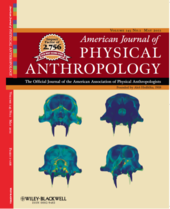Highlight
Chewing is more complicated than you think
Achievement/Results
As part of our IGERT Research Theme “Food Acquisition and Processing”, to elucidate the evolution of human diet, IGERT Trainee Janine Chalk and Brian Richmond applied a well-known engineering approach, “Finite Element Analysis”, to test long-standing ideas in anthropology and human evolution about how skulls are adapted to the mechanical demands of their food acquisition (e.g., biting) and processing (chewing). Anthropologists had developed hypotheses regarding whether overarching loading regimes, such as “bending” or “twisting”, can explain how skulls deform under the loads of biting and chewing, but these hypotheses have proven to be difficult to test using traditional methods. Chalk and colleagues used a finite element model of a macaque skull that incorporated data on 1) relative recruitment of chewing muscles, 2) muscle anatomy and force potential, 3) variation in mechanical properties of bone tissue throughout the skull, and 4) validation data from strain gage studies, to test these major hypotheses. The results showed that no single, simple loading regime can adequately account for the strain patterns found in the validated skull model, and instead propose that the finite element skull model replace simple skull models when investigating skull biomechanics (image attached).
Address Goals
It addresses discovery because it shows that models that make simple, intuitive, assumptions do not reflect reality






